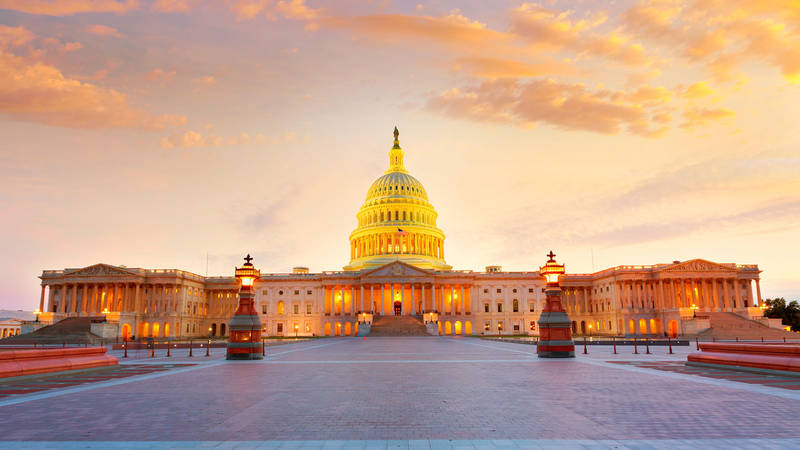If you’ve ever driven along the Blue Ridge Parkway, hopped on a shuttle along the Going to the Sun Road in Glacier, taken the ferry to the Statue of Liberty, or hiked along the Half Dome Trail in Yosemite, you’ve experienced some of the wide variety of transportation infrastructure found in our national parks.
What’s “transportation infrastructure”? It’s the roads, bridges, tunnels, and trails that allow you to access the treasures in our national parks with your car, bike, or feet. And it’s also the trolleys, shuttles, ferries, and other public transportation options that give you access to national parks when you decide to leave your car behind.
In fact, the National Park Service transportation system includes:
- 5,500 miles of publicly accessible paved roads
- 4,100 miles of publicly accessible unpaved roads
- 1,442 publicly accessible bridges
- 63 publicly accessible tunnels
- 147 buses, ferries, and other alternative transportation systems
- 17,872 miles of trails
Roads, bridges, and transit are integral parts of the national park experience. However, they are also facing the challenge that the system as a whole is facing – lack of funding to maintain them. In 2014, the deferred transportation maintenance deficit is more than $6 billion, over half of the $11.5 billion total deferred maintenance backlog faced by the National Park Service.
Traditionally, the building, operation, maintenance, and improvement of the national park transportation system has been supported with funds from the Highway Trust Fund. The national parks are currently receiving $240 million from that fund but the National Park Service estimates it really needs closer to $970 million annually to adequately maintain, improve, and complete its roads, bridges, trails, and transit systems.
A Growing Backlog of Projects
In a transportation system so vast, it should come as no surprise that it is complicated and expensive to maintain. There are potholes to be filled, barriers to be replaced, bridges to be refurbished, and all the other wear and tear that comes with thousands of cars and buses traveling over the same surface every day. Ideally, regular maintenance would keep these facilities functioning at their best and decrease the need for major rebuilding efforts. Unfortunately, years of inadequate funding have kept the National Park Service from doing the short- and long-term maintenance necessary to keep the transportation system in the form visitors deserve to experience.
The roads in our national parks are in bad shape – 40 percent of parks roads are in poor to fair condition, as are 77 percent of parking areas. Bridges are also suffering, with 42 described as structurally deficient. If the chronic underfunding of transportation needs continues, this problem will only get worse. Small problems going unfixed now will lead to bigger repair bills down the road.
The Mega Projects
There are some projects, such as a major bridge repair or road replacement, that require more funding than the National Park Service receives for its entire annual transportation budget. These projects, called Mega Projects, require funding outside of the core budget if they are ever to be completed. While many of the Mega Projects are roads and bridges, some of them are alternate transportation options. Here are some of the biggest needs the National Park Service is facing:
- The Grand Loop Road and Pelican Creek Bridge in Yellowstone National Park: It is estimated that over $1.2 billion is needed to repair the main road through Yellowstone and to replace the structurally deficient Pelican Creek Bridge.
- The Blue Ridge Parkway in Virginia and North Carolina: At 469 miles long, the Blue Ridge Parkway is one of the largest roadways that the park service manages. The Federal Highway Administration has determined that nearly 45% of the Parkway is ‘very bad’ to ‘bad’ and should be completely reconstructed. It is estimated that $300-$350 million is needed to rehabilitate portions of the Parkway and its tunnels and bridges.
- Arlington – Washington, D.C. Memorial Bridge: Symbolically connecting the North and the South, Memorial Bridge carries more than 68,000 vehicles and thousands of pedestrians and bicyclists each day. The bridge has become structurally deficient due primarily to severe corrosion of its steel; an estimated $128-$244 million is needed to replace the center span and rehabilitate its sidewalks.
Buses, Ferries, and Other Transit
With nearly 300 million people visiting national parks a year, alternative transportation systems (ATS) can play an important role in relieving congestion, improving environmental quality, boosting local tourism economies, and enhancing visitor experience in our parks and public lands.
ATS encompass motorized land- and water-based transportation systems, including alternative fuel buses (running on fuels like propane, electricity, and natural gas), trolleys, water taxis, ferry boats, canal boats, and aerial tramways, as well as non-motorized modes of transportation such as biking and walking.
The transit options in our national parks are as diverse as the parks themselves. Here are some examples of parks that are doing alternative transportation well:
- Since 2000, a shuttle bus system has served the most visited area of Zion National Park, Zion Canyon, and the local community of Springdale, Utah. In its first year, the shuttle service eliminated 42,000 vehicle trips and reduced congestion, noise, and motor vehicle emissions.
- The City of Homestead, Florida, has partnered with Everglades and Biscayne National Parks to provide a free guided trolley ride from Historic Homestead to each park. This ground-breaking project is the first of its kind nationally to offer public transportation to two National Parks.
- Operated in partnership with Cuyahoga Valley National Park, the Cuyahoga Valley Scenic Railroad provides an alternative way to explore the National Park. Passengers and cyclists are welcome year-round to discover Cuyahoga Valley by train.
For Media Inquiries
-
Issues


